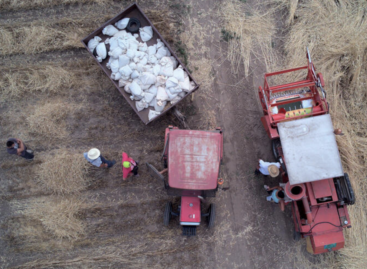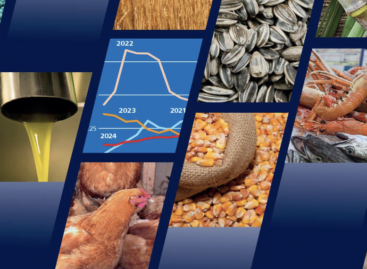International food prices have been decreasing for almost a year
The 11th month of global food prices has been on the ground after the decline in February – marginal – experts from the UN Food and Agricultural Organization (FAO).

(Photo: Pixabay)
The FAO Food Price Index closed 0.6%lower in February to January this year and 18.7%compared to last year’s peak. The change in the index, which follows the monthly price change of the most significant food materials of international trade, reflects the price of price reduction of vegetable oils and dairy products despite the steep rise in sugar. The price index of cereals has remained almost unchanged since January. The international price of wheat has increased slightly, but after the strong demand for drought affecting the United States and Australian wheat was offset by exporters. In the international market, rice increased 1%due to the fall of the Asian market and the devaluation of the currencies of these countries. The price index of FAO vegetable oils fell by 3.2%, thanks to the fall of palm, soy, sunflower and rapeseed oil. On average, dairy products were 2.7%cheaper in February, after the international quotation of butter and skim milk dust crashed. The FAO indicator for meat has not moved since January. The price of poultry has fallen due to abundant stocks, which the appearance of avian influenza could not shake in some major poultry breeding countries, while pork has become more expensive due to concerns that accompany the narrowing European export markets. In contrast, sugar prices jumped 6.9%in February, reaching the biggest level of the last six years. The reasons include the worsening Indian production prospects, as well as the reduction of crude oil and Brazilian bioethanol prices.
First forecast about 2023 wheat yield
The latest FAO grain sets and demands can be found in the first data on global wheat production 2023. According to experts, about 784 million tonnes are expected, which, although below last year, is still outstanding. A strong season is expected in North America with the growth of wheat production, thanks to high grain prices. In the countries of the southern hemisphere, the flag may stand in 2023, and in Brazil, corn yields may set a record. FAO corrected its forecast for the 2022 grain emission to 2,774 million tonnes, which is 1.3%below 2021. Meanwhile, international grain trade may shrink by 1.8%.
Prospects in the field of food
Drought, conflicts and high prices, together with macroeconomic problems, make food safety in many countries. 45 countries worldwide have to help with food, the FAO reported. Six countries are now or will soon be forced to face the most severe form of starvation: Burkina Faso, Haiti, Mali, Nigeria, Somalia and South Sudan. Millions of people suffer from food shortages. Despite the relief of recent months in the FAO Food Price index, food in many countries continues to cost a lot. For example, the prices of the eye in Ghana were 150%higher in January this year than last year; Cereal prices were never seen in Malawi and Zambia. According to a global analysis, which dissects the relationship between crop production and food, the situation is worrying in East Africa, where the most devastating drought of the last 40 years is raging.
Related news
FAO: Global food prices rose to more than a year-and-a-half high in November
Global food prices rose to their highest level since April…
Read more >FAO global food price index spikes
The global index of food commodities jumped to its highest…
Read more >Cocoa, coffee and tea prices raise global food import bill for richer countries
The global food import bill is expected to increase by…
Read more >Related news
Recognition of Consumer Protection Excellence: Honoring the Best of 2024
This year’s outstanding consumer protection officers and special award recipients…
Read more >The Joy of Giving! – SPAR stores collect non-perishable food for people in need
The Hungarian Maltese Charity Service and SPAR Hungary have launched…
Read more >KSH: industrial production decreased by 0.2 percent in October
In October, the volume of industrial production fell by 0.2…
Read more >








